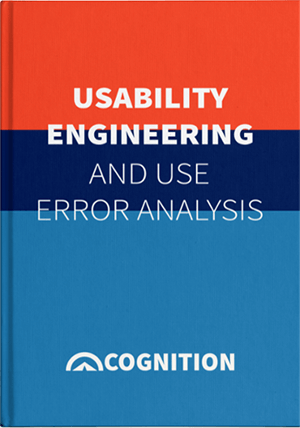Cognition Blog
Our blog navigates product development and compliance for the life science industry. Our solutions save time and money, delivering products with less risk.

By:
David M. Cronin
April 14th, 2025
In today's data-intensive biopharma landscape, traditional content creation just can't keep up. Discover how a Structured Content & Data Management (SCDM) approach to product development streamlines report generation, feeds AI/ML tools, and ensures submission-ready accuracy.

FDA | requirements | design controls | Medical Device | Product Development | Industry Updates | Design | Compass MED
By:
Sally Carter
March 25th, 2025
In the medical device industry, where precision and compliance are paramount, staying ahead of regulatory changes is critical. With FDA finalizing the alignment of its Quality System (QS) regulation with ISO 13485 by February 2026, medical device companies need to act now. This alignment has been expected as the international standards and FDA regulations have been converging for Quality System expectations for years. Since FDA announced its intent to align with ISO 13485 in 2018, the change should not be a surprise to medical device companies, but the implementation still requires careful and detailed attention to specifics. Fortunately, solutions like Cognition Corporation’s Compass MED provides a proactive way for companies to navigate complex regulatory landscapes and stay compliant from the start.

Subscribe to the blog and get this guide for free

design controls | Testimonial | Compass MED | Traces
By:
Cognition Corporation
January 22nd, 2025
Our latest solution, Compass MED, is a structured data and design control SaaS solution built specifically for medtech companies. Key features include multi-level requirements management, comprehensive risk management, and test management.

requirements | design controls | Design | Compass MED | Contract Manufacturers
By:
Patrick Maxwell
January 13th, 2025
In today's rapidly evolving medical device industry, more companies and entrepreneurs are turning to contract design and manufacturing firms to bring their ideas to life. Managing multiple products, teams, and clients simultaneously is nothing new for these firms; however, the increasing complexity of products and immense pressure on time to market demands a more robust approach. That's where a centralized, structured data management and design control solution purpose-built for MedTech such as Compass® MED becomes essential, enabling firms to efficiently organize and analyze the multiple streams of information involved. Here are six key benefits of using Compass MED:

design controls | Testimonial | Compass MED | Traces
By:
Cognition Corporation
September 26th, 2024
At Cognition, the success of our customers is key. That’s why our latest product, Compass MED, was designed with 3 key priorities in mind: Improve efficiencies, incorporate quality by design, and enhance risk management and compliance.

Medical Device | Risk Management | Compass | Design | compliance | Regulations
By:
Ben Higgitt
September 10th, 2024
Medical device manufacturers face significant pressures to bring safer products to market faster. However, meeting critical project milestones and launch dates on time and within budget is becoming increasingly difficult. Medical devices are becoming more complex—which makes product development more difficult. At the same time, industry standards and regulations are evolving, placing new pressures on quality, regulatory, and engineering teams.

Medical Device | Risk Management | Compass | Design | compliance | Regulations
By:
Cognition Corporation
August 5th, 2024
How can medical device manufacturers successfully balance the significant pressures of today’s market? On the one hand, they need to bring new devices to market quickly. On the other hand, devices are becoming much more complex, while at the same time, industry standards and regulations are continuing to evolve. During our recent webinar, three panelists—Nathan Brown, R&D Fellow at Boston Scientific; Mike Casper, System Engineer Manager at Smith & Nephew; and Eric Maas, a former Medtronic executive and founder of Six Sigma Experts—shared their perspectives on how medical device manufacturers can achieve speed to market, safely.

Medical Device | Risk Management | Compass | Design | compliance | Regulations
By:
Gerald Wesel
April 22nd, 2024
Most medical device manufacturers continue to rely on manual and Word/Excel-based approaches for design control and risk management—and that’s hindering their ability to achieve critical strategic initiatives, including improving efficiency and accelerating time to market.

Medical Device | Risk Management | Compass | Design | compliance | Regulations
By:
Cognition Corporation
March 19th, 2024
A Q&A With Gerald Wesel, Cognition Chairman and CEO Gerald Wesel, Cognition’s Chairman and CEO, is responsible for setting the company’s strategic direction. He is known for propelling innovative, disruptive technology companies to next level success, and has previously served in leadership roles at seven startups and four large enterprises. In this Q&A, he provides his take on how medical device development is evolving—and the persistent and emerging challenges that device companies are facing as a result. He also shares some key strategies that device company leaders should be employing to help their organizations adapt and thrive.

info@cognition.us
1 (781) 271-9300
24 Hartwell Avenue,
Lexington, Massachusetts 02421
©2025 Cognition Corporation | Privacy Policy